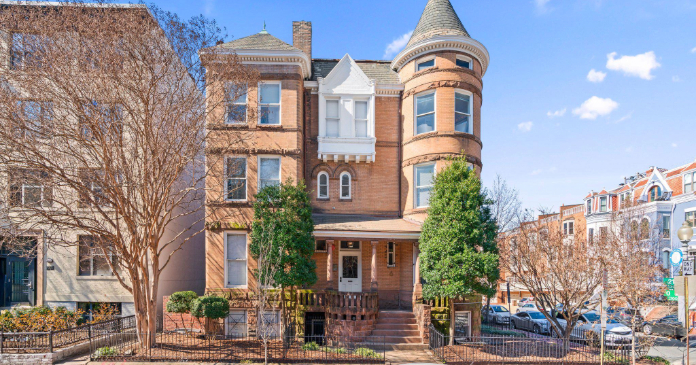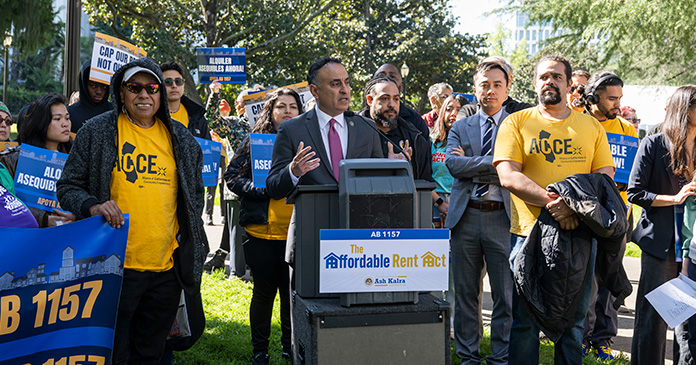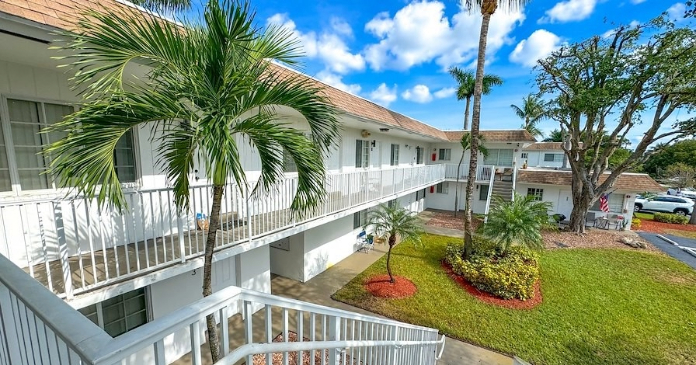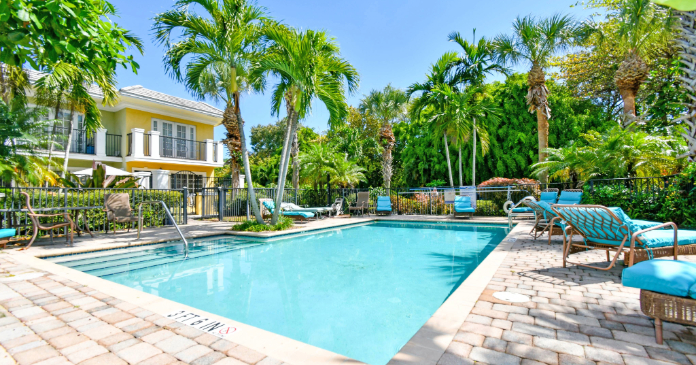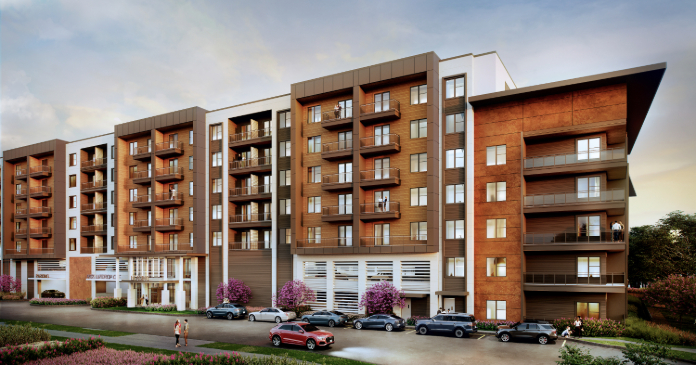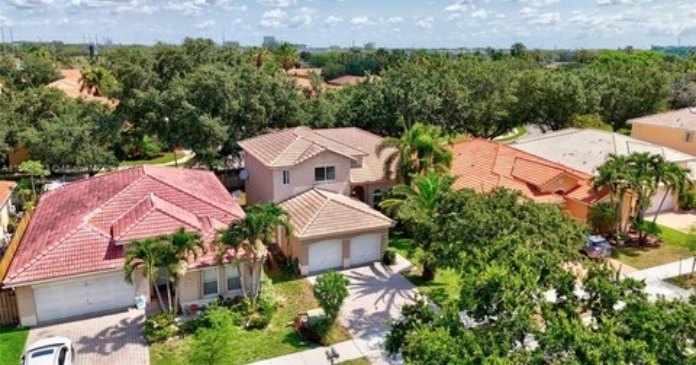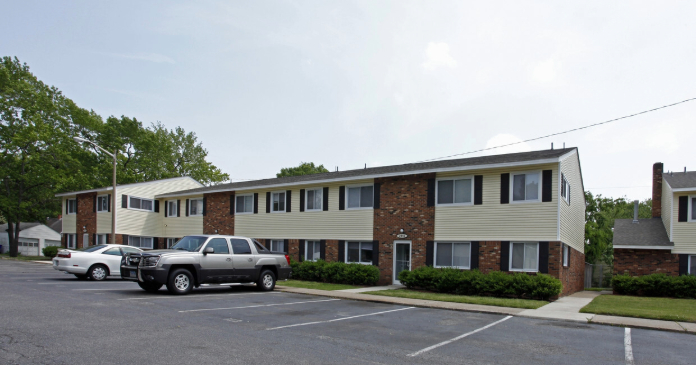They’ve been called opportunity funds, distressed funds and, in less polite terms, vulture funds, but no matter what you call them, today there are plenty. For the past two years, domestic and foreign investors have been pooling their money in the hopes of finding deals amidst the fallout from the worst housing downturn since the Great Depression. On their radar are any type of distressed real estate — land, busted condo construction and conversions, foreclosures and non- performing loans.
While there is money pouring into these funds, very little is being deployed. Most industry watchers say a wide gap still exists between sellers’ and buyers’ expectations.
“There’s blood in the water but it hasn’t been flowing yet. Billions and billions of dollars are eager to buy, but there haven’t been many sales yet. These are very astute balance sheet guys–the MBA’s at the hedge funds, the investment banks, private equity groups and high-net- worth investors. Recently funds from Europe and Canada have been investigating taking advantage of the favorable exchange rate to acquire distressed U.S. real estate assets,” said Jack McCabe, principal of Deerfield-based McCabe Research & Consulting LLC.
This “new” and speculative money from non-traditional real estate sources is competing with seasoned multifamily REITs, private apartment developers and operators, and value-added specialists, many of which had a tough time penciling profitable returns during the recent days of artificially inflated land and asset values.
But some of the biggest fortunes made in America have been made during downturns, not booms. Time will tell which players targeting distressed assets today have the savvy to spin multifamily gold from the opportunities everyone now agrees are ripening for the plucking.
It’s no secret the market is rife with condo converters and developers left holding properties with unsold units. “Owners are losing or have lost all their equity, and in many cases the mezzanine portion of their debt stack is wiped out. The primary note holders are looking at substantial haircuts on loans made to condo converters. It’s lose/lose for the developer and lender, but opportunistic buyers who are looking at acquiring bonds, notes and assets, at the right price can make it work profitably for themselves and their investors,” said McCabe.
Experience matters
An example is Chicago-based Laramar Group, which opened new offices in Irvine, Calif., and Palm Beach Garden, Fla., last year. Flush with equity in its $350 million Multi Family Value Fund, the company is scouring markets around the country for its bread-and-butter value- add business, but also is finding opportunities to acquire distressed notes backed by quality real estate, especially in Florida and California.
The company closed on its fourth condo reversion in Florida in June, acquiring the mortgage on the 41-year-old, 160-unit Oceanview Apartments in Boca Raton from Miami-based Ocean Bank. Laramar negotiated with the mezzanine lender and the asset owner, NRW Development, to complete an amicable foreclosure, was appointed receiver and took over management during the process. The foreclosure was approved by the court six months later at $70.13 million. The sale was brokered by Apartment Realty Advisors.
McCabe estimates Laramar paid about 50 to 55 percent of the value of the combined $59.6 million mortgage and subordinate $3.5 million mezzanine debt — somewhere around $35 million, or $225,000 to $240,000 a unit.
“Laramar is a long-term apartment operator. Recently they have been purchasing notes from lenders at substantial sub-par values and then foreclosing on the properties themselves, as opposed to acquiring REO assets from lenders in a competitive bidding process. At the price point they have been able to acquire these notes, they are in a position to realize positive cash flow shortly after acquisition, or at least break even until things get better,” said McCabe.
Laramar VP of Acquisitions Ron Roan said that, after a $40,000-per- unit renovation program, Laramar’s total cost for the property will be in the mid to high $200,000s. When repositioned, the renamed Villa Oceana will be Boca Raton’s only luxury waterfront rental. The mid- rise community is located two miles from Boca Raton, 20 minutes from Fort Lauderdale and 30 minutes from West Palm Beach on a prime 4.7- acre site bordered on the west by the Intracoastal Waterway and on the east by the Atlantic Ocean. The property includes boat dockage on the Waterway and a key-accessible private beach on the ocean side.
Upgraded units will include 18-inch Italian ceramic flooring and plush carpet, high-end Whirlpool appliances, granite counter tops and European-styled cherry-wood cabinets.
Rents for the upgraded the ones, twos and threes will range from approximately $1,500 to more than $3,000. During the construction process, Laramar is offering concessions of two-months free for 13- month leases on select units, some with ocean views.
Laramar has been particularly active on both coasts and in Texas, proof that it pays to be a long-time player. The company has specialized in value-add multifamily opportunities in markets across the country since 1989. As for competition from hedge funds and other opportunity investors, “We haven’t seen a lot of sales activity of any type in Florida this year,” said Roan.
Bascom weighs in
One reason could be that banks and other lenders aren’t eager to lend into an overpriced market. Some might be busy working out the inventory already on their books.
Jane Hoffner, Managing Director of Bascom Portfolio Advisors (BPA), expects to be helping banks with workout issues for a number of years. Eighteen months ago, she and the principals at Irvine, Calif.- based Bascom Group formalized the BPA business plan. Their combined experience provides the platform of the BPA service offering to banks and other financial institutions.
Hoffner has a 20+ year track record of handling workouts, managing distressed assets and analyzing real estate investments across a wide range of property types. “Our business at this juncture is to offer consulting and asset management services to financial institutions. A sale to an opportunity buyer may not always be the best answer. We will look to help these institutions understand the issues and offer solutions to optimize values and mitigate losses,” she said.
In the case that a sale is the best option, BPA has the capacity to purchase real estate assets or non-performing debt. To the extent a sale may not optimize returns to an institution, BPA could operate an asset on an incentive management basis to create cash flow and potentially invest new capital.
Initially, BPA is reaching out to small and medium-sized regional banks. Hoffner says, “It is these institutions that may have limited staff and are in most need of our services. I’ve been spending time developing relationships with some of the smaller banks to let them know we can be a resource should the need arise.”
By her estimates, it will take years to work through the turmoil in the credit markets and the devastation caused by the condo craze and single-family housing boom. “The economy may turn around, but we will still be working through these problems for the next two, three and four years,” said Hoffner.
Bascom has a 12-year history of repositioning distressed assets and a successful track record optimizing assets through renovations and institutional quality management and reporting. Headquartered in Southern California, the company has branched out to the Pacific Northwest, Arizona, Colorado, Utah, Texas and Georgia. In 2006, Bascom formed a $200 million JV with Warburg Pincus. “That fund was entirely invested in distressed properties, including several REOs, They had intended to also purchase non-performing loans, but were a little early in the cycle” said Hoffner.
She thinks that more than likely this contraction will be characterized by several waves of fallout. “Right now, there is a lot of anguish with residential land out there, which takes a specific expertise and understanding to value. Broken condos are also popping up all over. Other sectors have been holding up a little better but there is a lot of uncertainty in the economy right now. There is momentum building, but the bulk hasn’t hit yet. When it does, I think there will be plenty of opportunities to go around,” said Hoffner.
Opportunity from both sides
Deals have been few and sporadic so far. McCabe says he is aware of several deals that were done privately in hopes of avoiding public scrutiny. “Sellers are fearful of the cost of litigation on top of the losses and write-offs to complete deals,” he said.
McCabe hasn’t shunned controversy. He was one of the first to warn about the housing bubble in 2004, when few wanted to hear bad news while the money was rolling in. Today he points out, “Just as a strong case can be made that mortgage and real estate fraud had a tremendous amount to do with the artificial inflation rates of properties, especially in Florida, Nevada, Arizona and California, it also could be argued that some of the people who prospered during the boom years are now seeking to prosper with opportunistic acquisitions of distressed properties in the downturn.”
Florida-based The Related Group, one of the nation’s leading luxury condo builders, announced in February that it had partnered with the Philadelphia-based real estate equity firm Lupert Adler to create a
$1 billion investment vehicle to “leverage the sluggish market,” said Related Group chairman and CEO Jorge Perez.
McCabe thinks Perez’s rampant building habits during the condo boom helped create a large percentage of the oversupply that exists in Florida today. “The Related Group could take a tax write-off on its unsold condos over the next couple of years, end up with no losses and buy back some of its own properties at deeply discounted prices through the fund,” he opined.
On the other hand, McCabe notes, “The Related Group’s condos that have been completed in 2008 so far have seen a high percentage of closings in comparison to other Miami condo projects. I believe it is due to their competitively better locations and a pricing structure that left more money on the table for the original investor buyers.”
Prior to the Related Group becoming the number one condo builder in the country during the boom years, Perez specialized in developing affordable apartment complexes with rents geared to the working class and service industry employees. “Perez and other affordable housing developers moved into market-rate condo development during the building boom because of the high level of profits that were realized,” said McCabe.
Another prolific condo player, SunVest Communities, which sold hundreds of condo conversion units each month during the heyday, recently teamed with Sky Development, Inc., to form the $300 million SkyVest Real Estate Opportunity Fund. The vehicle is targeting multifamily rentals, new and converted condos and other distressed commercial properties in many of the same markets where SunVest still owns unsold conversion units, or projects that have seen large numbers of foreclosures.
Gavin Susman, managing member of SkyVest, said the fund expects to close on its first transactions in a few months, but refused to comment on whether any of SunVest’s conversion properties with unsold and/or foreclosure units were being considered by the fund.
A sales representative at SunVest’s 360-unit Citi on Camelback in Phoenix, where the company offered incentives in April 2006 that included no closing costs and no condo fees or mortgage payments until 2007, disclosed that 182 of the units have been sold and the remaining 178 are under contract. The units now in escrow, and some that are being offered for lease by owners, are being leased and managed by Greystar, which has onsite leasing offices at a number of SunVest’s communities in Phoenix.
An agent for South Florida-based The Continental Group, which is managing the HOA and leasing activity at SunVest’s Florida communities –three of which still appear on its Website in the “current communities” section, said, “The developer is gone, all units have been sold,” but added that Continental currently is leasing an unspecified number of foreclosed units.
Today, callers to SunVest Communities’ Hallandale, Fla., corporate office are greeted by the voice message, “Welcome to Lenders Clearing House, the nation’s number one source for successful real estate transactions, specializing in foreclosures and short sales.”
The bail-out
“I’ve always believed that the vulture buyers would end up creating the bottom of the market, not any type of government intervention, but that it would be when the banks and builders start selling off their portfolios at deeply reduced prices,” said McCabe, who thinks that time is right around the corner.
“The regulators have been given their marching orders to get banks to move REO property and non-performing portfolios off of their balance sheets, and, after the election, I think you will see a trigger for a lot of these distressed deals,” he said.
McCabe predicts private equity groups will help bail out the banks by buying portfolios of non-performing loans at deep discounts and sorting through them to figure out which of the debtors who are still in the homes could actually afford to keep them, if the mortgage payments were lowered to more manageable levels.
“As an example, you may have someone who took out a $400,000 mortgage, but it’s coming to the adjustment period and it’s pretty obvious they are not going to be able to afford the payment. The private equity group may have bought the note at well below $200,000.
They can offer the debtor a six-percent interest rate and lower the mortgage, turning the non-performing loan into a performing loan.
They might be able to profitably convert 80 percent of the portfolio, but the remaining 20 percent that can’t be worked out will be factored into original acquisition cost and resold at a lower value.
“The government is talking about doing that through the FHA, with the Housing and Recovery Act of 2008. But I think the bail-out program might only affect 300,000 to 400,000 homeowners, and we are talking about a potential of three million foreclosures.
“It’s going to be a big bail-out for the banks on their lousy mortgages, which now are going to find their way into Fannie Mae and Freddie Mac and ultimately be subsidized by the taxpayers, and 90 percent will pay for the 10 percent who made bad decisions.
“The people who are living in their homes and are in danger of losing them, because they were seduced into exotic mortgages, deserve a hand if they can show they can afford to pay a mortgage, if it is adjusted down. But speculators and investors, I don’t think anyone should bail them out. If you make a stock purchase and the price goes down, you don’t go crying to be bailed out. If you gamble and lose in Las Vegas, you don’t go to the government and ask for help because you are going to lose your home,” he said.
There is good news from Florida’s multifamily front, however. After three years of minimal apartment development dominated by Section 8 and low-income tax credit deals, McCabe is beginning to see an interest in the market from REITs and big private firms like JPI, Trammell Crow Residential, Lane Company and Lincoln Property Company.
“We are seeing some of the market-rate apartment developers re- entering the Florida marketplace. They are making acquisitions and submitting plans to planning and zoning for different projects. So, it is a bright spot and I believe by the time construction is complete, probably two to three years from now, they are going to time the market for its earliest point of recovery, he said McCabe admits that he has received a lot of interest from investors to start his own opportunity fund or pair in a strategic alliance with a large pool of capital. “I’ve toyed with the idea in the past, but decided it was too early. But the blood is beginning to flow and it appears the time has come.”
Western National Group’s second private equity fund wasn’t set up as an opportunity fund. But CEO Michael Hayde always expected Fund II would participate in what he sees as a continuing reduction in the pricing of land that condo developers bought during the single-family housing boom and have been marketing since that bubble burst in mid-2006.
“In any market where there is turmoil, there also are opportunities and higher returns available to those who can raise the capital,” he said.
Funded by life companies, investment banks, pension funds and Western National’s long-term, high-net-worth investors, Fund II raised $200 million of equity by November 2007. Hayde thinks the fund, which will be used to purchase $800 million to $1 billion of real estate, will be closer to $300 million when it finally closes later this year.
The company’s first fund was capitalized with $50 million and, when combined with another $20 million in joint-venture equity provided by individual investors in the fund, purchased around 1,500 apartments in Southern California in 2005 and 2006.
Fund II also is focused on multifamily development and acquisition deals in Southern California. On the radar are broken condo projects in various stages of development that Western National could reposition and successfully operate as apartments, and vacant land owned by disappointed condo developers.
Since November, however, only one transaction has closed escrow — the purchase of two contiguous land parcels, totaling 3.35 acres, in the Warner Center area of Woodland Hills that were put under contract in August 2007, before the fund was capitalized, and finalized in October and January 2008.
“We don’t buy land and bank it. If we see a transaction we like, we move forward with it even if the capital isn’t in place. We were very confident we would raise the money, so we wanted to acquire the site because it was a great piece of property for the fund,” said Western National CEO Michael Hayde.
The seller originally planned to build condos on the site. “It is the quality of real estate that all of our investors were very happy to hear about when we discussed it with them, when we still were out raising money,” he said.
Hayde recalls that one of the investors asked him what would happen if the fund’s investor advisory committee did not approve the project. His simple answer was that the company planned to do the deal anyway with its own money, even if the advisory committee failed to approve it. “It’s a good deal and a good site,” said Hayde.
Rising on the parcel is the 195-unit Enclave at Warner Center, a four-story luxury apartment community wrapped around a 5.5-level parking structure. First units are scheduled for delivery in March 2010, with completion expected six months later. The 118 ones, averaging 700 sq. ft., and the 77 twos that average 1,075 sq. ft., will feature faux- wood floors, granite counter tops, Moen faucets and fixtures and all- black GE appliances.
At the Morgan Group’s highly amenitized 362-unit Triana nearby, leases for the ones, twos and threes range from $1,655 to $3,115.
Triana began leasing in late January and is 49 percent occupied today. Current specials at the property include two weeks free and $1,000 back for leases signed within 48 hours.
Some developers are pushing delivery dates out as far as they can so they don’t have to deliver into a soft market. Fairfield Residential’s 264-unit Carillon in Woodland Hills had been scheduled to open this summer, but was pushed back until September. Carillon is the first of two mid-rise wrap-style communities to be built on 11 acres that Fairfield purchased from Pacific Properties LLC for $60 million in 2006. Ground recently broke on the second-phase, the 224- unit Carabella, which has a planned delivery date in late 2009.
Hayde, who joined Western National when it was formed in 1981, has worked through several downturns and knows how to read the signs.
“After the fund closed, we had an investor meeting in December in which I told my investors that my view of the world is that we wanted so sit silent for somewhere between 90 and 150 days to see which way the waves were breaking. There is a lot of change going on in the market, and I think if you had made a buy in December, that property might sell for a meaningfully lesser amount today. So, we are seeing changing valuation and its’ downward, not upward,” Hayde said in March.
Almost five months have passed without a clear signal that the time is right to become active. “The question is where are the bid and asking rates going to meet? The volume on pure sales from our tracking is that approximately 30 percent of the deals have closed in the first half of 2008,” he said.
“We haven’t purchased a property for over two years and we are glad we haven’t. If you look at what is lining up on the horizon — which is not a lot of goodness either in the industry or the country in terms of recession — I tend to be in the camp that believes sellers will capitulate first. Lending has dried up. Patience is the hallmark to live with in this market,” said Hayde.
Hoping to deploy $60 million or $70 million of fund capital by year- end, split equally between development and acquisitions, Western National also will focus on growing its management business and stabilizing the 250-unit Meadow Square apartments, which came online in June within the 1,000-acre master-planned community of the Preserve at Chino in California’s Inland Empire. The property’s ones, twos and threes, which range from 728 sq. ft. to 1,109 sq. ft., include 106 affordable housing units that rent for $563 to $1,998.
Western National manages 14,000 of its own apartments and fee manages another 7,000 units. The company is the second largest third-party apartment manager in Southern California, where the Irvine Company is number one.
Lion Real Estate Group LLC, the investment firm launched by Mory Barak and Jeff Weller in July 2007 to capitalize on distressed and value-add properties in three Los Angeles sub-markets, bore fruit almost immediately, closing two transactions within eight months of start-up.
The multifamily veterans are leveraging their 17 combined years of experience in acquisitions, brokerage, development, leasing and finance to add value to the assets they purchase by renovating and repositioning them in the rental market through better management and capital optimization.
Their key to success is three-pronged — an intimate knowledge of the Los Angeles market, a focus on non-rent-controlled assets too small to attract institutional buyers, but too large for an individual owner looking to buy an income property, and the liquidity to close quickly on an all-cash basis.
“In our market, where prices haven’t gone down much and cap rates haven’t moved up, it’s difficult for funds and institutions that are underwriting based on IRRs to hit the hurdles they need to hit. So, you see a lot of guys sitting on the sidelines. Even with our focus on smaller, opportunistic deals, we are sifting through a lot of deals and putting out 10 or 20 offers a week, with maybe one hit a month. So it’s a numbers game,” said Barak, who formerly worked in the principal investments group at Buchanan Street Partners.
Barak and Weller are bullish on the Los Angeles market because of its diverse economy and strong population growth, they have a long- standing relationship with the local brokerage community.
“Mory and I are from the Los Angeles area and we understand the fundamentals of the market very well and what’s going on in the housing sector. We think that, within these infill areas in Los Angeles County, even with the increases we’ve seen, there is a huge rent-to-own gap and lots of room for rents to keep moving north. The vacancy rate is below four percent in the county and even lower in our sub-markets. Rental rates year-over-year in the county have grown five percent and, in our sub-markets, nine percent,” said Weller, a former broker with CB Richard Ellis.
Barak adds that the shake-up in the single-family housing sector and capital markets has brought a lot of people into the rental pool, or kept them there. “High gasoline prices also are playing a role.
People who live on the outskirts and commute into Los Angeles and Orange County would rather rent an apartment closer to work, if they had the choice,” he said.
Providing a 10 percent co-investment alongside their high-net-worth investment partners, Lion’s co-founders plan to place more than $100 million in equity over the next five years to build a portfolio of around 1,000 B+ units, valued at around $300 million, in the A+ West Los Angeles, Koreatown/Hancock Park and Hollywood sub-markets.
They will consider busted condos, distressed loans and joint ventures with struggling operators, with an average deal size of between $7 million and $25 million and IRRs of more than 20 percent over a five- to-10-year opportunistic hold period. “Our plan is to stabilize an asset within three to five years, or recapitalize,” said Weller.
Lion closed in February on the seven-unit Bungalows at Ocean Park, located within four blocks of the beach in Santa Monica–a vacant, newly constructed building mapped for tenants-in-common, much the same as a condo map.
The sale price was $3.2 million in cash, or around $457,142 per unit, which, after the broker’s commission, wiped out the equity and barely covered the debt of the seller, who had no experience as an income operator and was unable to successfully convert the would-be condos to rental when the for-sale market softened. “At that point, he was just glad to be out from under the property,” said Barak.
“We paid cash and leveraged the asset with a bridge loan at 60 percent LTV, with an earn-out provision based on NOI hurdles, which we met and exceeded, taking us to 70 percent,” said Barak. The units are fully occupied at lease rates averaging $4.20 per sq. ft., four of them through a master lease with a corporate housing provider that Lion put in place while the property was in escrow. The remaining units leased up quickly. “We held two open houses and were leased out before the first loan payment was due,” said Weller. Lion expects leveraged IRRs north of 40 percent.
On the heels of Bungalows’ closing, Lion principals and investors picked up the fully occupied, 70-year-old, Gramercy in Koreatown for $2.55 million, or $187,500 per unit, again for just slightly more than the seller paid for the property just two years previous in a 1031 exchange. The building’s 12 two-bedroom units that average 1,250 sq. ft. and feature hardwood flooring, crown molding and high plaster ceilings, were renting for around $1,500, 15 percent below market.
In the 1980s, the owner had completely retrofitted the building to meet earthquake safety laws. In return, the city granted a rent- control exemption. “We have a very diverse renter base — people in the entertainment industry, entrepreneurs, almost like a Melrose Place, a very charming building that offers the best of both worlds — old and new,” said Weller.
Lion is spending between $100,000 and $150,000, or $10,000 to $15,000 per unit, on common area renovations and another $8,000 per unit to upgrade baths, add stainless steel appliances in kitchens, refurbish the floors and add new windows. “There wasn’t much deferred maintenance, but these old brick buildings need a lot of TLC,” said Barak. The renovations were financed with a bridge loan, also with an earn-out.
Lion has two deals in escrow. One probably won’t close, said Barak, but the other, an 18-unit building in Koreatown is expected to close in early September.





